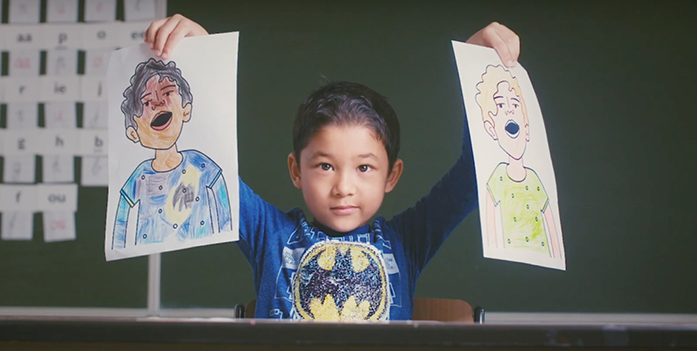School network SOM (Samen Onderwijs Maken) in Belgium asked some children to be a part of an experiment with unsettling results. Here, they were told to pick a coloured pencil to use to fill in “skin colour” on a drawing of a person. Every child picked the light pink shade – even children with skin tones much better matched by other pencils in the box picked this pink colour.
But the children definitely know the colours and different shades. Because when they were told to draw with orange and green pencils, they chose the right colours. So why is it that all of them pick the light pink shade as the “obvious” skin colour?
This is a problem that agency TBWA Belgium and SOM have been trying to solve with the experiment and short film. Because in the film, we see how the children at last are asked to draw themselves. These children all have various skin colours and they pick the pencil colour that is the most representative of how they actually look. But the phrase “skin colour” throws them off, obviously.
It’s a bit like an issue crayon brand Crayola had in the 1960s, when changing a crayon name from “flesh” to “peach.” But these pencils aren’t named anything so leading. So SOM and TBWA Belgium have created a box of pencils with seven different shades to redefine what children think of as the right or normal colour for skin. The box is called The Skin Color Collection.
The box of pencils was released on March 21, the International Day Against Racism, with an event where students gathered in the Belgian city of Leuven to colour huge drawings of people in all different shades, from light pink to dark brown. The box was available the following month on the SOM website.
